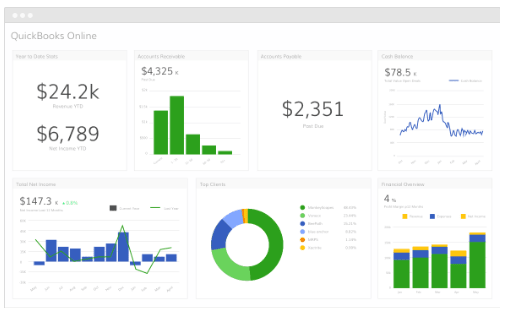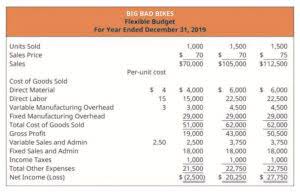Bookkeeping
Recording Prepaid Expenses in QuickBooks: A Step-by-Step Approach

Remember, the key to mastering prepaid expenses lies in consistent documentation and periodic reviews. By following best practices and leveraging QuickBooks’ features, you can maintain precise records and make informed financial decisions. Perform periodic reviews of all entries related to prepayments—this ensures ongoing accuracy in reporting these assets/liabilities correctly within financial statements. Properly managed prepaid expenses present a clearer picture of your company’s financial health by ensuring assets and liabilities are correctly reported. These expenses are recorded as assets initially and then expensed over time as the benefit is received.
- The accounting process for booking prepaid expenses is to initially record the payment as an asset and then gradually reduce that balance over time as the goods or services are used.
- Similarly, a prepaid insurance expense is a prepaid expense that has been paid for by the company.
- Tracking prepaid expenses through journal entries allows businesses to more accurately track their cash flow.
- In each of the successive months, equal parts insurance will continue to be credited from the prepaid insurance account.
- Managing prepaid expenses might seem daunting at first, but with the right approach and tools like QuickBooks, it becomes a straightforward task.
- Perform periodic reviews of your prepaid expense accounts to ensure accuracy and compliance with accounting standards.
Lease Commencement Date and Start Date for US GAAP Accounting Explained

Sticking with the accrual method of accounting, a second important consideration when recording a prepaid asset is the utilization period. If the entirety of the prepaid asset is to be consumed within 12 months, then it is deemed a current contribution margin asset. However, it is not uncommon to see contracts spanning multiple years, being paid in advance. In these scenarios the portion of the prepaid obligation which exceeds 12 months is recognized as a long-term or noncurrent asset.

Journal Entries for Prepaid Insurance

It provides the benefit of obtaining services at a predetermined cost, which aids in budgeting and financial stability. Among these, one particularly important type of prepaid expense is prepaid insurance. As for the second portion, which involves the incoming benefits or services used in the coming period, this represents current assets, otherwise known as unexpired expenses, prepaid expenses, or expenses paid in advance. When a company pays its insurance payments in advance, it makes a debit entry to its prepaid insurance asset account. As the coverage term progresses and sections of the prepaid insurance are expensed, the prepaid insurance account is credited to reflect the decrease in the prepaid amount. For example, if a company pays $12,000 for an annual insurance coverage, their monthly prepaid insurance expense is $1,000 ($12,000/12 months).
Sign up for latest finance stories
- The system supports tax management, offers detailed financial reports that update as expenses are amortized, and provides tools to track, reverse, and attach documents, giving full control over your financial statements.
- This is primarily because of the fact that business are supposed to follow accrual basis of accounting.
- The expense, unexpired and prepaid, is reported in the books of accounts under current assets.
- Therefore, the unexpired portion of this insurance will be shown as an asset on the company’s balance sheet.
- FastTrack company buys one-year insurance for its delivery truck and pays $1200 for the same on December 1, 2017.
- 11 Financial’s website is limited to the dissemination of general information pertaining to its advisory services, together with access to additional investment-related information, publications, and links.
The current ratio is calculated by dividing current assets by current liabilities. By definition, current prepaid assets would be included in the numerator, or current assets portion of the current ratio, and positively affect the results. The amortization schedule has a column for the total cash payment made at the beginning of the subscription term of $2,000. We then divide the $2,000 over the 24 months of the subscription term to arrive at a monthly subscription cost of $83.33, to be recognized on the income statement each month the subscription is utilized. Concurrently, we are also amortizing both the long-term and short-term balances of the prepaid subscription.
Understanding Goodwill in Balance Sheet – Explained

The prepaid insurance journal entry example expense, unexpired and prepaid, is reported in the books of accounts under current assets. Although being a simple concept, it is important for an organization to correctly account for and recognize prepaid expenses on its balance sheet. Prepaid assets typically fall in the current asset bucket and therefore impact key financial ratios. Additionally, an organization reporting under US GAAP must follow the matching principle by recognizing expenses in the period in which they are incurred. This requires proper calculation and amortization of prepaid expenditures such as insurance, software subscriptions, and leases.
Income Statement Under Absorption Costing? (All You Need to Know)
Prepaid expense journal entries guarantee that any advance payments for products or services are accurately recorded as assets. This reflects that these payments are not considered expenses yet but future financial benefits to the business. Because they represent a future benefit owed to the company, companies list prepaid expenses first on the balance sheet in the prepaid asset account. Because companies anticipate them to be consumed, employed, or spent through regular business activities within a year. An insurance premium is an amount that an organization pays on behalf of its employees and the policies that a business has rendered.

